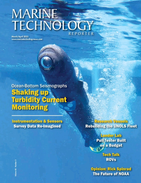Endurance Exploration team completes video survey of shipwrecked paddle steamer Connaught , recovers first artifacts
Endurance Exploration Group has completed a video survey of the shipwrecked paddle steamer Connaught and retrieved the first artifacts from the surrounding debris field. These artifacts, including bottles and chinaware, are currently undergoing conservation.
"This represents the first big step as we begin the careful excavation of the shipwreck Connaught," said Endurance CEO Micah Eldred. "Artifacts from the debris field are giving us an up-close look into the condition of the ships' cargo after 155 year of submergence and fishing net strikes. This information is critical to our exploration of the Connaught's interior as we work to locate her gold cargo."
Built in Ireland and launched in 1860, the 380-foot iron-hulled side-wheel steamer Connaught was lauded as one of the largest and most luxurious ocean-going liners in service, a true Titanic of her time. Upon sinking on only her second voyage, the Connaught became best known for her role in what has been called one of the most courageous, daring and successful rescues in maritime history. All 591 of the ships passengers were saved by the heroic effort of a tiny fruit transport ship, the Minni Schiffer and her Captain, John Wilson. The Connaught sank on her way from St. John's, Newfoundland to Boston, Massachusetts with a shipment of £10,000 in gold coin.
As indicated by the high-resolution sonar imagery and video footage from Endurance's 2014 expedition, the Connaught's bow is relatively accessible. However, the engine compartment and stern are covered with commercial fishing nets, some of which measure hundreds of feet in length. The impact of these nets has severely damaged the aft section and triggered a number of structural collapses. These nets pose an immediate danger to our underwater robotics system. In response, our research ship has temporarily returned to port to reconfigure our ROV loadout to compensate for this threat. We will redeploy with a custom-made net-removal tool to remediate these environmental and structure hazards. This operation is of particular importance as we currently believe the gold cargo and other valuables are most likely located in the aft portion of the wreck.
"We're committed to working the site of the Connaught as long as the season will allow and, if necessary, return in 2016," added Eldred. "We're not done until we've finished excavation and fully told the story of the great ship Connaught."
Built in Ireland and launched in 1860, the 380-foot iron-hulled side-wheel steamer S.S. Connaught was lauded as one of the largest and most luxurious ocean-going liners in service, a true Titanic of her time. Upon sinking on only her second voyage, the S.S. Connaught became best known for her tragic role in what has been called one of the most courageous and daring rescues in maritime history.
The elegant S.S. Connaught departed Galway, Ireland on September 25, 1860, bound for Boston by way of St. John's, Newfoundland. She departed for the final leg to Boston with 50 first-class passengers, 417 in steerage and a full crew of 125. In addition, she was quietly loaded with £10,000 in gold coins, possibly bound for a visiting member of the British royal family.
Her routine voyage became perilous when she sprang a leak in a sudden storm, forcing passengers and crew alike to join forces in an effort to save her. Though the leak was brought under control, the doomed ship soon faced a far more dangerous adversary – a fire below her decks.
Smoke and flames drove passengers and crew alike to the top deck, building in strength so quickly that none of the gold cargo or valuable passenger belongings could be saved. Lifeboats were ordered lowered, but they were smashed by the violent waves. Disaster seemed all but certain -- until a tiny fruit transport sailed to intercept the burning ship. By this time the S.S. Connaught's hulls were so hot they boiled the waves as they crashed against her. Heroism abounded as a line was thrown across decks, transferring women and children first, then the male passengers and crew. There were soon so many people on the tiny fruit transport that they stood on every available patch of deck, some even clinging to the tall masts and rigging.
The Captain of the S.S. Connaught was bound by tradition to leave last. Soon after he departed, both rescuers and rescued watched as the S.S. Connaught disappeared beneath the waves, over one hundred miles from the nearest land. It was a long and trying night, but every soul was safely delivered to Boston's India Wharf the following day. Nearly 600 souls had been transferred from one of the largest ocean liners of the time to a tiny fruit transport without a single loss of life.



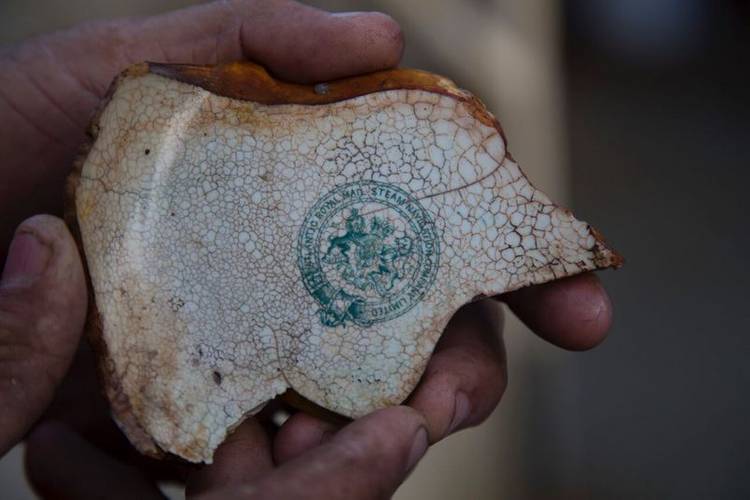
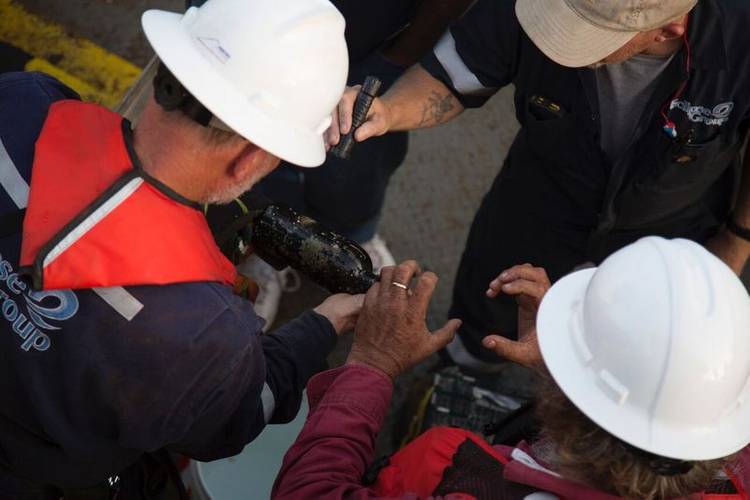

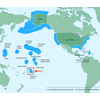
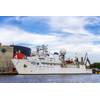

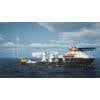
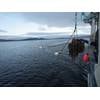






 February 2025
February 2025


